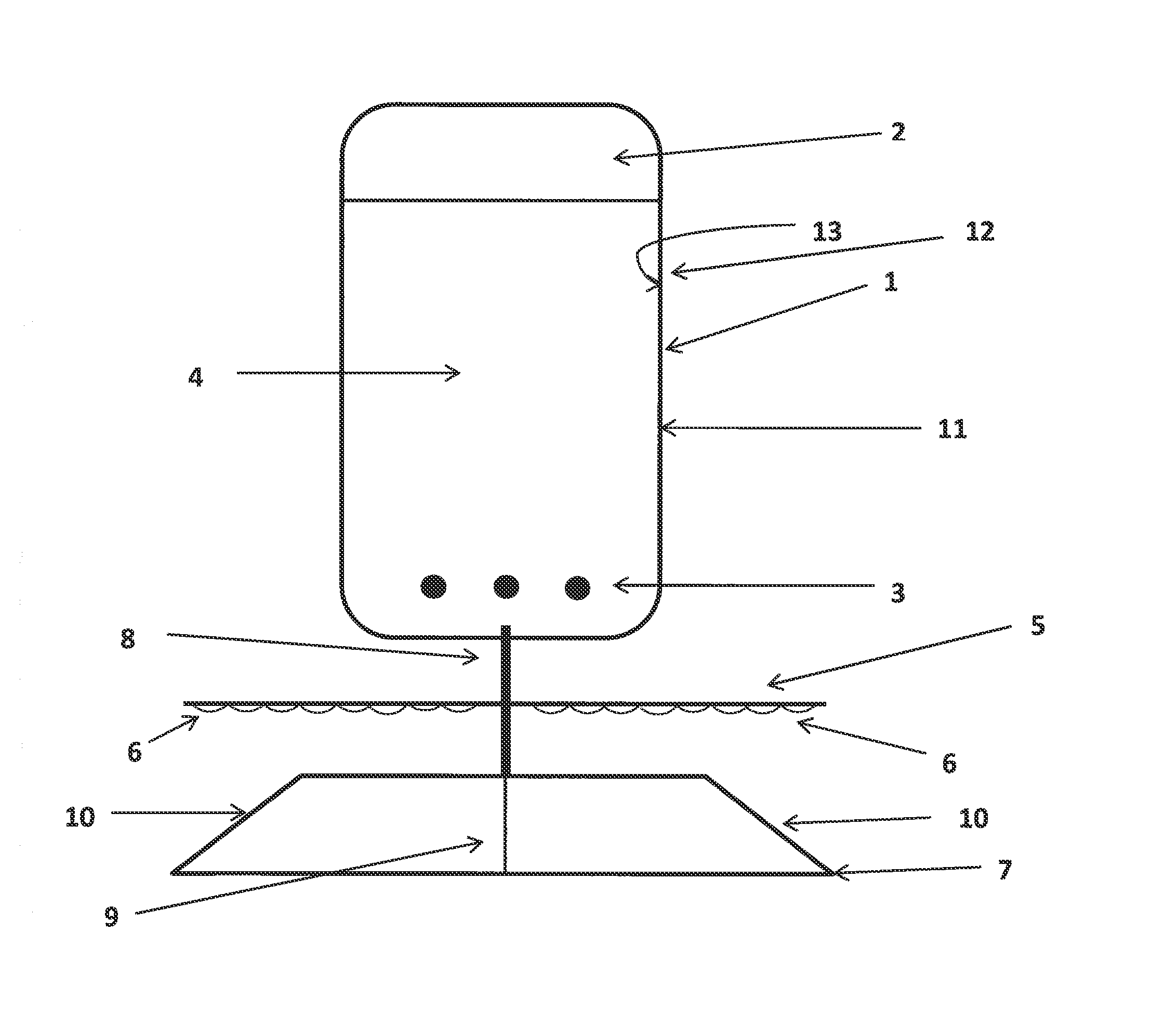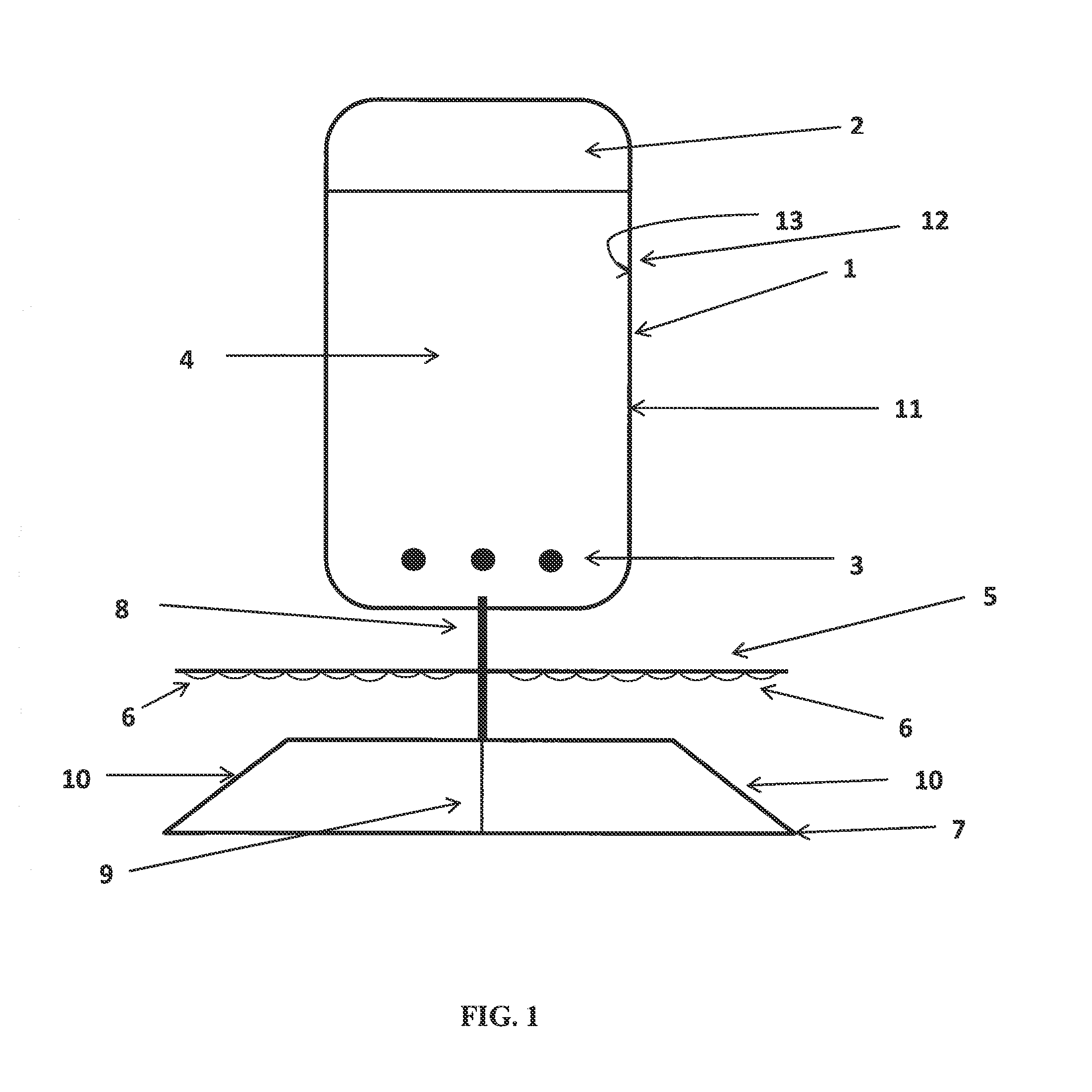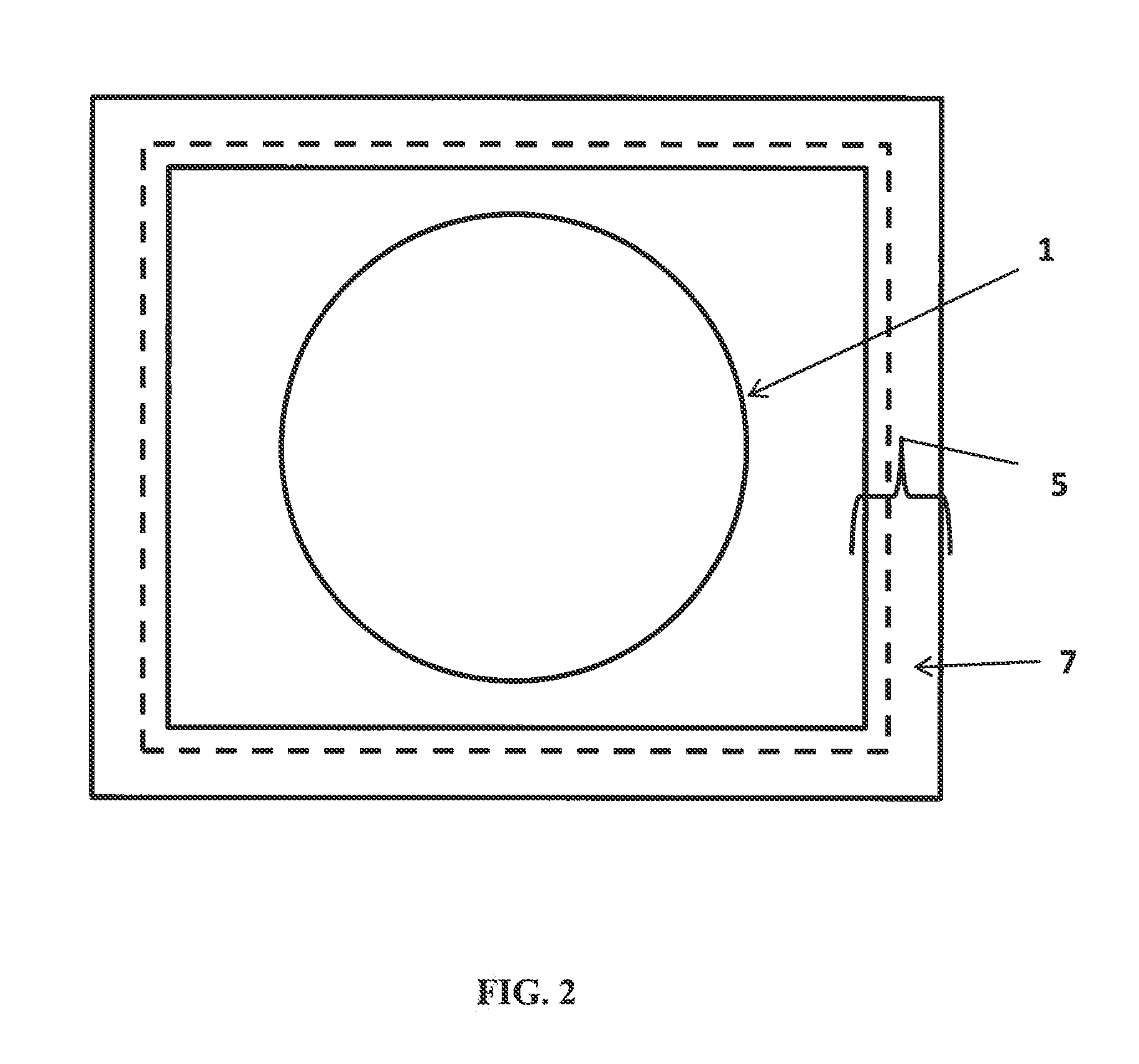Modular insect trap
a module and insect trap technology, applied in the field of arthropod collection devices, can solve the problems of significant man-hours to monitor and limited methods in their efficiency
- Summary
- Abstract
- Description
- Claims
- Application Information
AI Technical Summary
Benefits of technology
Problems solved by technology
Method used
Image
Examples
example 1
[0018]The device, illustrated in FIG. 1, comprises a container 1, with at least one wall 11, comprising an outside 12, and inside 13, surface; and an adhesive tape or strip 5, for example adhesive tape, with the adhesive side 6 facing down, In another embodiment, the device further comprises a base 7 for supporting the container 1. In one embodiment, not illustrated herein, the adhesive tape or strip 5 may additionally be provided with a covering or backing over the adhesive 6, which may then be removed when trapping is desired to commence. In another embodiment, double-sided tape can be used but with backing on one side not removed. In another embodiment, the container 1 is placed directly on the base 7 with the weight of the container 1 and its contents, such as attractant 4, holding the container 1 in place. In another embodiment, as illustrated in FIG. 1, the container 1 can be secured to the base 7 by an attachment means. As an example, the container 1 can simply rest on the ba...
example 2
Method for Trapping Arthropods
[0024]The device, such as the embodiments described in Example 1, can be used in a method for trapping arthropods without the need for constant monitoring of the devices. In one embodiment, the method comprises placing the device described in Example 1 in a desired collection area. It may be necessary to trim vegetation so the device sits firmly on the ground. If the device is the embodiment as illustrated in FIG. 1, the container 1 is then placed on and optionally secured to the base 7, by either adhesive tape or other connecting means, such as via a post and hole arrangement 8 as illustrated in FIG. 1, An adhesive tape or strip 5, such as adhesive tape, with the adhesive side 6 covered by an optional backing, can be utilized such that when the backing is removed the adhesive face 6 will face down toward the beveling 10 of the base 7. An insect attractant is placed into the container 1. In one embodiment, the attractant is a CO2 source such as dry ice,...
example 3
Comparison of Collection Methods
[0026]The effectiveness of the inventive method was compared to two other, commonly utilized methods to collect ticks (Amblyomma americanum). The two methods included attraction and collection of insects on a white cloth and by dragging.
[0027]The three methods were compared side by side and conducted in late June / early July. Dragging was conducted using a double layer white denim cloth 1-square meter in size. The cloth was dragged 20 meters. This was repeated ten (10) times. Adjacent and while the dragging was ongoing, ticks were collected by a second “CO2” method. In the “CO2” method, ticks were collected onto 1 square meter white denim, double layer sheet. A cooler, similar to the container 1 described in Example 1, containing dry ice as a CO2 source, was placed in the center of the sheet. Ten (10) replicates of the “CO2” method were set 16 meters apart to collect simultaneously. Interspersed evenly between the “CO2” collection replicates (i.e., 8 m...
PUM
 Login to view more
Login to view more Abstract
Description
Claims
Application Information
 Login to view more
Login to view more - R&D Engineer
- R&D Manager
- IP Professional
- Industry Leading Data Capabilities
- Powerful AI technology
- Patent DNA Extraction
Browse by: Latest US Patents, China's latest patents, Technical Efficacy Thesaurus, Application Domain, Technology Topic.
© 2024 PatSnap. All rights reserved.Legal|Privacy policy|Modern Slavery Act Transparency Statement|Sitemap



